Speaker
Description
Background: Fungi is an important factor of human allergy given that they are ubiquitous by their nature and humans can be exposed to fungal allergens in different sources. The most often the one contacts with inhalant mold allergens which are contained in microspores and in mycelium. Several important fungal allergens are known up to now and the most valuable among them is Alternaria which is one of the most spread environmental fungi. However, as other fungal sources are also important the aim of our study was to determine the patterns of fungal sensitization in the population of Vinnytsia region of Ukraine and compare it with possible environmental exposure.
Method: The data of allergic sensitization of 2623 resident of Vinnytsia region obtained by the ALEX test in the years 2020-2023 were analyzed. It was compared with the aerobiological data gained in the same years by the Laboratory of Allergenic Environmental Factors Investigation at the National Pirogov Memorial Medical University. Spore concentrations per cubic meter of the air data were obtained using the volumetric spore trap of Hirst type.
Results: It was found out that 9.61 % (252 tested individuals) were fungi-sensitive. Men prevails in this sample (54.77 %) over women. Most of fungi-sensitive residents of Vinnytsia region (68.90 %) were sensitive to the major Alternaria allergen Alt a 1. Malassezia allergen Mala s 11 was the second (9.84 %). It was followed by Mala s 6 and Saccharomyces extract Sac c with the share 9.06 % for both. The next was Asp f s (5.51 %).
However, while analyzing the combined sensitization to different allergens we found out that 57.94 % of Vinnytsia region residents were sensitive to the Alt a 1 alone among fungal allergens. The only sensitivity to Mala s 11 held the second position with a share 4.76 %. Combination of Alt a 1 and Mala s 6 was the third (3.17 %) followed by the Sac c and Mala s 6 alone with a share of 2.78 % for both cases. Another important allergen Aspergillus was just 7th in combination with Mala s 11. Extract of Cladosporium Cla h and its allergen Cla h 8, which represent the most numerous spores in the atmosphere, were capable to sensitize just 0.79 % of studied people in combination with Alt a 1.
While analyzing the timing of sporulation of airborne fungi we found out that potentially clinical relevant concentrations of Alternaria of more than 100 spores/m3 of air were seen in 2020-2023 years from June 30 to October 28 – full 4 months. These period is especially dangerous for the Alternaria-sensitive residents of Vinnytsia region which constitute the majority of the fungi-sensitive patients.
Conclusion: Our study highlights the prevalence and specific patterns of fungal sensitization in the Vinnytsia region, emphasizing the potential risks associated with Alternaria exposure from July to October to the vast majority of fungi-sensitive individuals.

